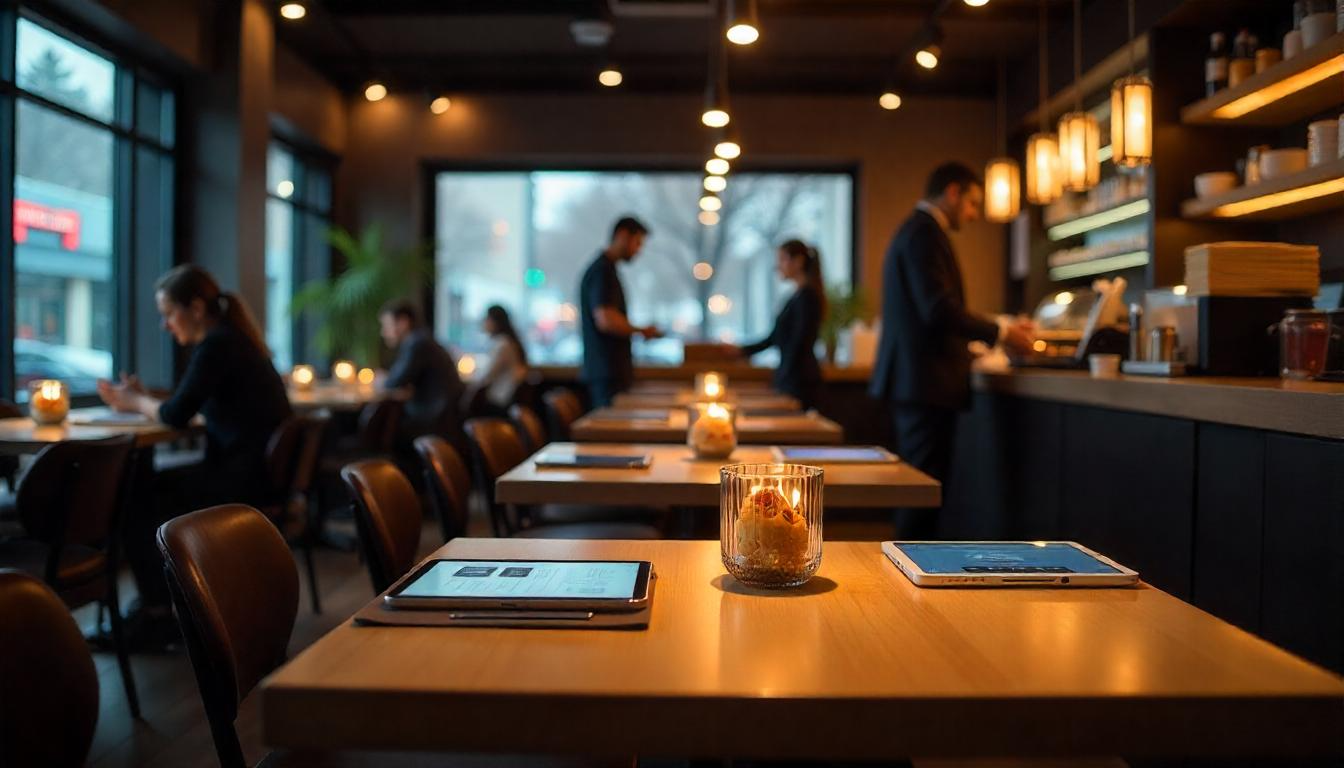In the dynamic restaurant acquisition market of 2025, understanding what drives valuation is more critical than ever. Whether you're planning to sell in the next few months or years from now, knowing what serious buyers are looking for can significantly impact your exit strategy and final selling price.
At Epicurean Digital Consultants, we've facilitated numerous restaurant transactions and have unique insight into what makes a restaurant truly valuable in the eyes of qualified buyers. This comprehensive guide reveals the factors that genuinely matter when sophisticated buyers evaluate restaurant acquisitions in today's market.
What Drives Restaurant Valuation in 2025?
The Buyer's Perspective: Understanding Their Priority List
Most sellers focus on what they value about their restaurant—the unique menu, loyal customer base, or cherished brand they've built. However, professional buyers evaluate restaurants through a different lens, focusing on risk assessment, growth potential, and return on investment.
Understanding this perspective shift is crucial. Regardless of whether you're selling to a strategic buyer, an individual operator, or a private equity group, these are the factors that truly influence their valuation and purchase decision:
1. Proven Financial Performance
Above all else, buyers are looking for verifiable financial performance. Clean, accurate financial records that demonstrate consistent profitability over multiple years are non-negotiable for serious buyers.
2. Favorable Lease Terms
The lease is often a make-or-break factor in restaurant acquisitions. Buyers are looking for assignable leases with favorable terms and sufficient remaining duration—ideally 5+ years plus renewal options.
3. Owner Independence
Restaurants that are overly dependent on the owner are less valuable. Buyers pay premiums for operations that can function effectively without the current owner's daily involvement.
4. Growth Potential
Smart buyers aren't just purchasing your current performance—they're investing in future potential. Demonstrable growth opportunities make your restaurant significantly more attractive.
5. Diversified Revenue
Restaurants with multiple revenue streams are less risky and therefore more valuable. Diverse income sources create stability and resilience against market fluctuations.
6. Prime Location
Location remains a fundamental driver of restaurant value. Buyers pay premiums for restaurants in high-traffic areas with strong visibility, accessibility, and demographic alignment.
7. Modern Technology Stack
In 2025, restaurants with integrated modern technology systems command higher valuations. Digital infrastructure is no longer optional but essential for operational efficiency.
Planning to Sell Your Restaurant?
Our valuation experts can help you identify and address key factors that will maximize your restaurant's selling price.
Schedule Your Valuation ConsultationUnderstanding Restaurant Valuation Multiples
Restaurant businesses are typically valued using a multiple of earnings, specifically EBITDA (Earnings Before Interest, Taxes, Depreciation, and Amortization) or SDE (Seller's Discretionary Earnings). Understanding these multiples is crucial for setting realistic price expectations.
2025 Restaurant Valuation Multiples by Segment
Valuation Insight:
Franchise restaurants typically sell for higher multiples than independent operations due to proven systems, brand recognition, and perceived lower risk. A strong franchise QSR can command 4-5x EBITDA, while a comparable independent concept might sell for 2.5-3.5x EBITDA.
Major Red Flags That Devalue Restaurants
Financial Red Flags
- Declining Sales - Even moderate downward trends over 2-3 years can significantly reduce valuation
- Unreported Cash - "Off the books" revenue creates legal issues and undermines financial credibility
- High Owner Compensation - Excessive owner salary/perks that can't be justified by market rates
- Thin Margins - EBITDA margins below 10% signal operational inefficiency
- Seasonal Fluctuations - Extreme revenue volatility increases perceived risk
Operational Red Flags
- Expiring Lease - Less than 3 years remaining with no renewal options
- Owner Dependency - Operations that collapse without the owner's daily presence
- Aging Equipment - Kitchen infrastructure nearing end-of-life requiring significant investment
- Employee Turnover - Staff instability, especially in management positions
- Outdated Concept - Menu and ambiance that doesn't align with current market trends
Case Study: Maximizing Valuation for a Fast-Casual Restaurant
A fast-casual Mediterranean concept with three locations engaged our valuation services 18 months before their planned exit. Initial assessment valued the business at approximately 2.8x EBITDA, but with targeted improvements, they achieved a final sale price of 4.2x EBITDA—nearly a 50% increase in value.
Key improvements implemented during the pre-sale period:
Value Enhancement Strategy Results
This strategic preparation not only increased the selling price but also attracted multiple qualified buyers, creating a competitive bidding environment that further enhanced the final sale terms.
Timeline: Preparing Your Restaurant for Maximum Value
To achieve optimal valuation, restaurant owners should begin preparing for sale well before they intend to exit. Here's an ideal timeline for maximizing value:
Valuation Strategy:
Restaurants that implement a structured 2-3 year pre-sale improvement plan typically achieve 30-50% higher valuations than those sold with minimal preparation.
- 2-3 Years Before Sale - Begin documenting systems, improving financial record-keeping, and addressing major operational inefficiencies
- 18-24 Months Before Sale - Implement technology upgrades, develop middle management, and ensure lease terms are favorable and transferable
- 12-18 Months Before Sale - Focus on steady growth in sales and EBITDA, diversify revenue streams, and optimize prime costs
- 6-12 Months Before Sale - Refresh physical assets if needed, ensure staff stability, and resolve any outstanding legal or regulatory issues
- 3-6 Months Before Sale - Prepare formal valuation, gather marketing materials, and begin identifying potential buyers
- 1-3 Months Before Sale - Formally list the business and prepare for buyer due diligence
Want to Maximize Your Restaurant's Value?
Our valuation experts can develop a customized exit strategy to increase your restaurant's worth before you sell.
Get Your Exit Strategy PlanValuation Methods: What Approach Will Buyers Use?
Understanding how buyers will value your restaurant helps you anticipate negotiation points and focus on the factors that genuinely drive value. These are the primary valuation methods used in the restaurant industry:
EBITDA Multiple Method
The most common valuation approach for restaurants with annual revenue above $1 million. This method applies an industry-standard multiple to your earnings before interest, taxes, depreciation, and amortization.
SDE Multiple Method
More commonly used for smaller restaurants where the owner is actively involved. Seller's Discretionary Earnings (SDE) includes owner benefits and compensation in addition to EBITDA.
Asset-Based Valuation
Used primarily for underperforming restaurants or those with significant real estate/equipment assets. This method calculates the value of tangible assets minus liabilities.
Revenue Multiple Method
Less common but sometimes used for high-growth restaurants or those with strategic value beyond financial performance. This method applies a multiple to annual revenue.
Buyer Types: Understanding Different Acquisition Priorities
Different buyer categories have distinct priorities and valuation approaches. Knowing what each type values most can help you position your restaurant for the right audience:
Individual Operators
Primary Concerns:
- Owner workload and lifestyle factors
- Stable cash flow and fair compensation
- Established customer base
- Reasonable learning curve
- Financing options (typically SBA loans)
Valuation Approach: Usually SDE-based, 1.5-3.0x multiple
Strategic Buyers
Primary Concerns:
- Geographic expansion opportunities
- Concept compatibility with existing portfolio
- Operational synergies
- Brand strength and reputation
- Growth potential in new markets
Valuation Approach: Typically EBITDA-based, 3.0-5.0x multiple
Private Equity Groups
Primary Concerns:
- Scalability and growth trajectory
- Strong management infrastructure
- Documented systems and processes
- Multi-unit potential
- Clear exit strategy for their investment
Valuation Approach: EBITDA-based with growth premium, 4.0-7.0x multiple
Real Estate Investors
Primary Concerns:
- Location quality and future potential
- Building condition and improvements
- Tenant stability if leasing back
- Development or redevelopment options
- Rental income potential
Valuation Approach: Cap rate on real estate plus business value
Final Recommendations: Maximizing Your Restaurant's Value
Based on our experience facilitating numerous restaurant transactions, here are our top recommendations for maximizing your restaurant's valuation:
- Start Early - Begin preparing for sale at least 18-24 months before your target exit date
- Clean Up Financials - Ensure 3+ years of clear, accurate financial records with strong profit margins
- Reduce Owner Dependency - Develop systems and management that allow the business to operate without you
- Secure Favorable Lease Terms - Negotiate transfer rights and extension options well before sale
- Diversify Revenue - Establish multiple income streams beyond just dine-in service
- Modernize Technology - Implement integrated digital systems for operations, marketing, and customer management
- Document Everything - Create comprehensive operations manuals, training programs, and recipe books
- Address Deferred Maintenance - Fix equipment issues and refresh aesthetics where needed
- Build Your Growth Story - Document opportunities for expansion that the new owner can capitalize on
- Hire Professional Advisors - Work with valuation experts, brokers, and accountants who specialize in restaurant transactions
Ready to Understand Your Restaurant's True Value?
Our restaurant valuation experts provide comprehensive assessments that identify both current value and strategies to increase it.
Request Your Valuation Analysis

